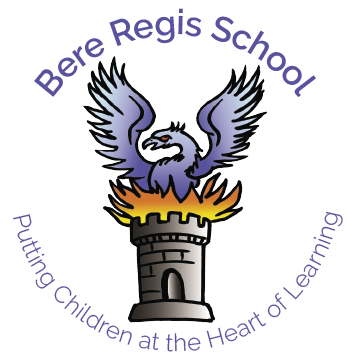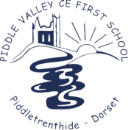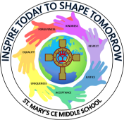
English
Reading
At Bere Regis Primary and Pre-school, we believe reading is the single most important area of our curriculum. We place it front and centre in everything we do. Timetables include plentiful opportunities for discrete teaching, for use of reading for information and to encourage a love of reading. Every day, we ringfence time for the whole school to undertake Read Write Inc, our phonics programme, because we believe learning to read must be prioritised. We also timetable guided reading, reading within English lessons, reading within wider curriculum lessons, library sessions, class reading books and individual reading.
Early Reading - Phonics
We use Read Write Inc Phonics to teach reading from pre-school onwards. Pupils in early years, KS1 and KS2 if needed, are taught in a dedicated lesson each morning, led by their reading teacher. Pupils are grouped with others, working at a similar level of challenge. The scheme focuses on making connections: pupils connect sounds with mnemonic pictures, words with their meanings and stories with the sounds they know. They connect their own experiences to the stories they read and learn to lift the words off the page. Pupils learn one sound at a time and practise it until it becomes second nature. There are opportunities throughout the school day and weeks ahead to revisit and embed sounds previously taught, in guided reading sessions for example.
Teachers make use of a variety of resources to support this work including letter cards and story books. Pupils begin by learning set one sounds. These are single letter sounds (a, b, c etc) and some common digraphs or ‘special friends’ (sh, ch, th, ck, qu, nk and ng). Pupils learn to recognise these letters or pairs of letters, the sounds they make and to read (and spell) simple words containing theses sounds by blending e.g. c-a-t = cat, ch-i-p = chip. We aim for all pupils in Reception to have completed this section of the scheme and to be able to read simple sentences by the end of the school year.
As pupils progress, they learn set two sounds (ay ee igh ow oo oo ar or air ir ou oy). By the end of this stage, pupils will have learned 41 of the 44 sounds in the English language. Alongside this, during Read Write Inc. lessons, pupils learn to read (and spell) words containing these sounds and work on green, purple and pink storybooks.
During the final step in the Read Write Inc. phonics programme, pupils learn to recognise alternative representations of previously learned sounds e.g. ai and a-e. and to read them in words. Pupils in this stage will tackle more complex words, including words with more than one syllable and work on orange, yellow, blue and grey storybooks.
Once pupils progress onto the Read Write Inc storybooks, they read them in school during the week, so that they are confident with the text. At the end of the week, pupils take home the storybook they have worked on to read with their family, celebrating their success. Alongside the Read Write Inc Phonics storybooks, we supplement children’s home reading with the Read Write Inc Book-bag books. These reinforce the sounds the children have learned during their guided sessions in school. As they move through the Read Write Inc storybooks, they also learn to read a set of ‘tricky word’ cards. These are high frequency words which pupils learn to read by sight (rather than sounding out). Having a bank of learned words helps pupils with their reading fluency.
Guided reading sessions
Guided reading forms a core part of the teaching of reading at Bere Regis. This time is precious and protected within our timetable. All children will take part in at least four guided sessions of 25 minutes each week.
An array of resources are used as stimuli for guided reading; Classic and modern books, read over a period of several weeks, often selected to further enrich a topic or provide author comparison opportunities, excerpts from texts, as above, poetry, adverts, leaflets, posters, newspapers, photographs and pictures.
Activities are designed to engage pupils and develop their reading comprehension skills, we call these VIPERS. VIPERS – Vocabulary, Inference, Prediction, Explanation, Retrieval and Sequencing (KS1) or Summarising (KS2).

Reading beyond the curriculum
Books at Bedtime
Twice a year, we hold a Books at Bedtime event, where pupils are invited back to school in the evening to listen to stories read by members of staff from the pre-school and Early Years team. This also acts as a model to parents, supporting them to read and engage with their children at home. We provide a free book to all pupils who attend the Books at Bedtime event.
The library
We enjoy a well-stocked, easily accessible fiction library which is organised into sections of picture books, early chapter books and books most suited to upper Key Stage 2. There are author feature sections where particularly popular authors are celebrated and copies of current affairs media (First News and National Geographic). Through our corridors, we also have a non-fiction library, where books are grouped by theme. Both are accessible to children to select from at all times. Each class has a timetabled slot each week during which they visit the library, spend time selecting new books and enjoy a book-based activity. Children can borrow two books each week, in addition to any scheme books.
Access to the library is also available to pupils and parents after school and, to pupils, during lunch. There is a daily library club, where older pupils support younger ones to read and choose books. In the pre-school, pupils have access to their own well-resourced library. A library trolley is positioned in the reception area, in order that parents dropping off and collecting can access it each day. As well as books, there are a section of photocopied nursery rhyme cards for loan.
Story Time
Each class has a timetabled slot at the end of the day for story time. This is a ringfenced opportunity for teachers to share books and oral stories with their class that are more advanced than the majority would be able to access independently. The story may be selected for its cultural capital, or for what it offers in terms of social and emotional understanding. Teachers may also share non-fiction and poetry texts during this time, but the majority of the sessions will be a story. Teachers ask questions and discuss their reading, but the primary purpose of story time is to engage with reading for pleasure.
Reading volunteers
We believe 1:1 reading is critical to early reading progress. As such, we endeavour to provide multiple opportunities through the week for our youngest pupils and those who are not yet fluent readers. In addition to guided reading and RWI sessions, pupils read 1:1 with teachers and TAs through the week. We also benefit from a committed group of adult volunteers who visit school weekly to read 1:1 with pupils in each class.
We work with Dorset Reading Partners (https://dorsetreadingpartners.org.uk/) to provide additional reading support to pupils identified as needing further reading support, particularly in terms of reading for pleasure. DRP recruit and train volunteers have the skills to provide top quality, effective help, recognising the needs of each child and tailoring their sessions accordingly. The aim of the thirty minute sessions is to make reading fun by sharing our love of reading, providing children with a choice of interesting materials, and allowing them to work at their own pace in a nurturing and supportive setting. Volunteers bring their own resources, including books and games to share.
We also undertake a reading buddies scheme, in which pupils in our year 5 and 6 class volunteer to lead weekly 1:1 reading with their peers and younger pupils, usually during morning registration. These pupils are trained by watching 1:1 sessions led by staff, and coached in how to ask questions and develop fluency.
World Book Day
Each year in the Spring term we celebrate World Book Day. This is a day when publishers and booksellers come together to give children a token to exchange for one of the World Book Day books, or you can get £1 off of any book. Check out the World Book Day website – it is an amazing place to explore, not just for World Book Day but all year round!
Although we celebrate the joy of reading throughout the year, we make an even bigger thing of it during the week of World Book Day. We come together as a whole school to celebrate reading and books; sharing our favourites with others and doing book-related activities during the day.
Writing – Jane Considine writing approach
At Bere Regis we have adopted ‘The Write Stuff’ by Jane Constantine to bring clarity and consistency to the mechanics of writing and to enable our children to write effectively and coherently. As a school, all children from EYFS to Year 6 learn to write through the Write Stuff approach. This was developed by teacher and leading English consultant, Jane Considine. It is a fun, creative and rigorous approach to develop children’s writing. This approach allows children to apply basic skills, vocabulary and grammar knowledge to write effective sentences, which are full of impact and keep the reader interested.
In ‘The Write Stuff’ approach to writing, the children explore high level, rich vocabulary and are taught grammar in context through different writing lenses on the Writing Rainbow. There are three lenses used to support children with their writing:
- Fantastics – ideas for writing
- Grammaristics – tools for writing
- Boomtastics – writing techniques

The Write Stuff is based on two guiding principles; teaching sequences that slide between experience days and sentence stacking lessons. As part of the teaching sequence, teachers plan experience days; sentence stacking lessons and independent writing sequences. Experience days immerse children in experiences linked to their writing and drench them in vocabulary linked to the lenses in ‘The Writing Rainbow’. From the experience days, children take part in the sentence stacking lessons. Sentence stacking lessons focus on writing three sentences with focuses on lenses of the rainbow.
‘The Write Stuff’ follows a method called ‘Sentence Stacking’ which refers to the fact that sentences are stacked together and organised to engage children with short, intensive moments of learning that they can then immediately apply to their own writing.
An individual lesson is based on one plot point from the text, broken in to three learning chunks:
- 1. Initiate section – a stimulus to capture the children’s imagination and set up a sentence.
- 2. Model section – the teacher models a sentence that outlines clear writing features and techniques.
- 3. Enable section – the children write their sentence, following the teacher’s model.
This part of the unit is heavily scaffolded with lots of teacher input and modelling of vocabulary use, sentence construction and use of grammar with reference to the 3 writing lenses.
During the initiate section children ‘chot’ (chat and jot) down their ideas from stimulating resources, such as pictures, music and drama. The children are encouraged to use ‘kind calling out’ where they call out examples of vocabulary, adverbs, onomatopoeia etc.
During the Model section the teacher prepares children for writing by modelling the ideas, grammar and techniques of writing taken from the writing rainbow.
In the Enable section pupils write their own sentences, taking the opportunity to deepen the moment. ‘Deepen the Moment’ is where children are challenged to independently draw upon previously learnt skills and apply them to their writing during that chunk.
Following the sentence stacking, children are given the opportunity to show what they have learnt by planning, writing and editing their own independent piece of writing.
Writing in EYFS – The Drawing Club
In the Autumn term in reception, use Drawing Club. Drawing Club incorporates story sharing, speaking and listening, drawing, writing, vocabulary, mathematics, imagination and collaboration. Each week we have a focus story or animation. The children learn new vocabulary linked to the story or animation and are invited to Drawing Club, where they may draw a character, setting or event. They can innovate their drawings and add secret passwords, magic powers or spells, hidden symbols, letters or numerals. At the start of reception, the sessions may be purely drawings based but this will progress on throughout the term to labelling their drawings with initial sounds, CVC words and eventually writing sentences about their drawings.












